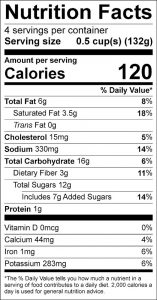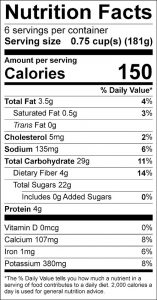Bulletin #4175, Vegetables and Fruits for Health: Carrots

Revised and updated by Extension Professor Kathleen Savoie, University of Maine Cooperative Extension.
Originally developed by Extension Nutrition Specialist Nellie Hedstrom, University of Maine Cooperative Extension.
For information about UMaine Extension programs and resources, visit extension.umaine.edu.
Find more of our publications and books at extension.umaine.edu/publications/.
Carrots, which are a member of the parsley family, were grown in New England as early as the middle 1600s. In addition to the orange ones we normally eat, carrots are also available in red, purple, yellow, black, and white varieties. About two billion pounds of carrots are grown in the United States each year, mainly in Texas, Wisconsin, Minnesota, and California. Maine-grown carrots are available from July through February.
Nutrition Information
The deep yellow to deep orange color of carrots indicates that they are an excellent source of carotene, which your body converts to the antioxidant, vitamin A. They are also a good source of vitamin C (also an antioxidant) and fiber. Carrot juice is a good source of potassium, which helps maintain a healthy blood pressure.
Selection
Choose smooth, well-colored, firm carrots. Avoid carrots that are wilted, flabby, or cracked, or that have large green areas at the top. Small carrots are more tender than large ones. If you buy carrots with the tops still on, make sure that they are bright green and fresh looking.
Storage
Store carrots in a closed plastic bag or container in the refrigerator. Carrots will keep well in the refrigerator for up to two weeks. Remove the leafy green tops before storing, because they absorb moisture from the carrots and cause them to shrivel. If carrots do become wilted, they can be re-crisped in cold water.
Preparation
Raw: Carrot sticks are a colorful addition to a vegetable platter. Shred or slice carrots to add to a salad. To make raw carrots easier to chew, briefly steam or microwave them until they are crisp-tender.
Steaming: Peel and cut carrots into quarter-inch slices. Steam until crisp-tender (8 to 10 minutes for 2 cups). To steam, bring an inch of water to a boil and place a colander or a collapsible steaming basket in the pot. Put the vegetables in the colander or steamer and cover it tightly. Reduce heat to medium-low, but make sure that the temperature is high enough to keep the water bubbling.
Microwaving: Peel and cut carrots into quarter-inch slices and place in a 1-quart covered dish. Add 2 tablespoons of water and microwave. Microwave 2 cups of cut carrots at high power for 3 to 7 minutes. Make sure to stir once during cooking.
Flavor Enhancers: Dill, coriander, tarragon
Glazed Dijon Carrots
Serves 4
16 ounces baby carrots
2 tablespoons butter or margarine
2 tablespoons brown sugar
1 tablespoon Dijon mustard
1/2 teaspoon ground ginger
1/4 teaspoon salt
In a saucepan, bring carrots to a boil. Reduce heat; cover and cook for 10 to 12 minutes or until tender. Drain. Place carrots in a serving dish and keep warm. In the same pan, melt butter. Add brown sugar, mustard, ginger, and salt; cook and stir over medium heat until sugar is dissolved. Pour over carrots and toss to coat.
Crunchy Carrot Salad
Serves 6
3 cups fresh grated carrots
2 unpeeled red apples, chopped
1/2 cup raisins
1/4 cup toasted slivered almonds (optional)
1 cup low-fat plain yogurt
3 tablespoons low-fat mayonnaise
1 tablespoon lemon juice
Combine carrots, apples, raisins, and almonds in a salad bowl. Blend together remaining ingredients in a separate bowl and add to carrot mixture. Serve on salad greens.
Some content adapted with permission from University of Massachusetts Cooperative Extension.
Information in this publication is provided purely for educational purposes. No responsibility is assumed for any problems associated with the use of products or services mentioned. No endorsement of products or companies is intended, nor is criticism of unnamed products or companies implied.
© 2008
Call 800.287.0274 (in Maine), or 207.581.3188, for information on publications and program offerings from University of Maine Cooperative Extension, or visit extension.umaine.edu.
In complying with the letter and spirit of applicable laws and pursuing its own goals of diversity, the University of Maine System does not discriminate on the grounds of race, color, religion, sex, sexual orientation, transgender status, gender, gender identity or expression, ethnicity, national origin, citizenship status, familial status, ancestry, age, disability physical or mental, genetic information, or veterans or military status in employment, education, and all other programs and activities. The University provides reasonable accommodations to qualified individuals with disabilities upon request. The following person has been designated to handle inquiries regarding non-discrimination policies: Director of Equal Opportunity and Title IX Services, 5713 Chadbourne Hall, Room 412, University of Maine, Orono, ME 04469-5713, 207.581.1226, TTY 711 (Maine Relay System).



